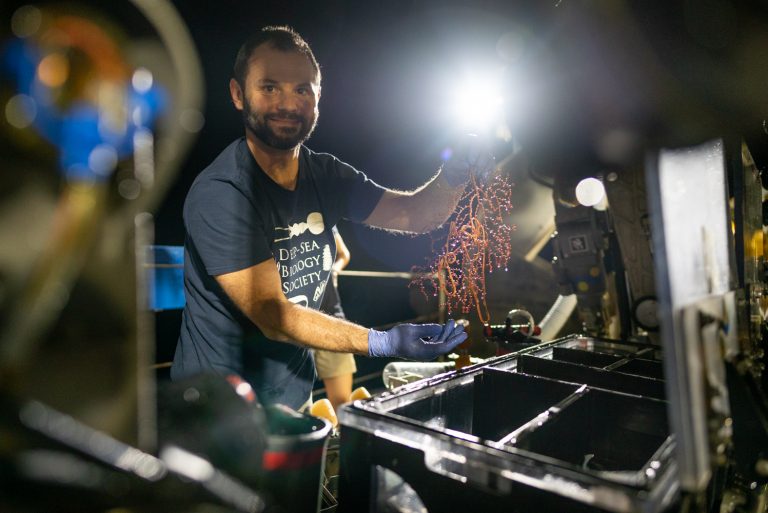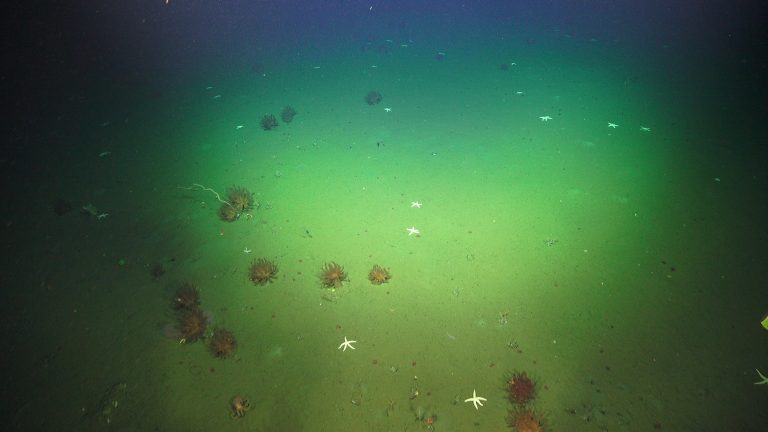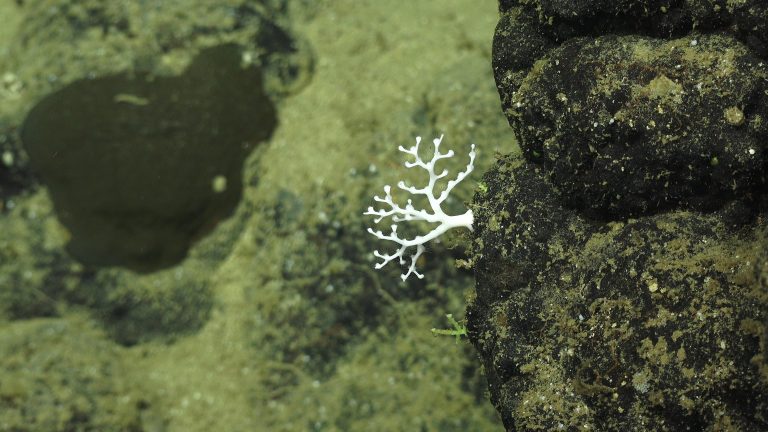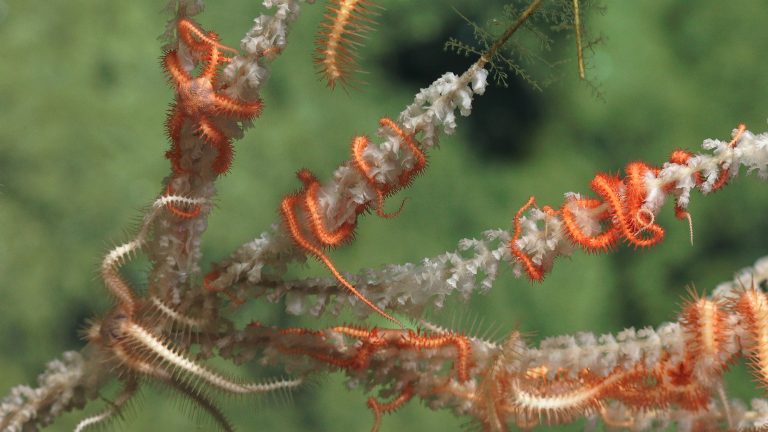Haz click aquí para blog en español
Chief Scientist Erik Cordes is happy. The work on the seepage sites along the Costa Rican margin has taken less dive time than expected, and additionally, the team has been finding multiple new species. The weather has been exceptional. Yet experience has taught Dr. Cordes not to take anything for granted – to get through the high priority tasks first, which is why the Costa Rican Deep Sea Connections expedition has moved forward, beginning the exploration of uncharted seamounts. It is time to sail towards Cocos Island National Park.
For Dr. Cordes, this cruise is the icing on the cake of an ongoing investigation. Two previous cruises he managed have already surveyed the seepage sites along the Costa Rica margin, now the team only needs to go back to pick up a few current meters and deployments previously laid down on the seafloor. But before that happens, the team will send Remotely Operated Vehicle SeBastian out to climb two of the seamounts that connect Cocos Island to continental Costa Rica.

Climbing Up a Mountain
The researchers on board know that the dives will be very different from now on. They will effectively be going on hiking day trips, with the difference that they will be using an ROV instead of their legs to go up the mountains. It will be pure exploration, looking both for undiscovered species, as well as known species living in new habitats. The crew aims to determine which ones can extend to these seamounts and possibly use them as stepping stones to get to Cocos Island – and even further away, to the Galapagos. “Any time you do an exploratory dive, you walk in with the question ‘what will we find?’, and you walk out with dozens of questions like ‘why were they there?, how were they there?, why wasn’t this there?, how are they living with such low oxygen?, where is this species?’” says Dr. Cordes. It is an endless cycle,quickly producing more questions than answers. For example, Dive 219 introduced us to a seep at 650 meters of depth, where the experts found a surprising diversity and density of life, considering the low oxygen conditions. “We saw a field of sea stars, there was one every meter for a kilometer at least,” says Dr. Cordes. “I have never seen that before, and I don’t know why it happens.”

Seamounts under the ocean, like mountains above the water, create special conditions that foster specific kinds of life. Corals and sponges, for instance, are two species that the scientists expect to encounter. Corals prefer steep slopes because a seamount changes the dynamics of the currents, and instead of having to survive on a flat surface in the middle of the mud, the corals will be sticking up where the waters are flowing and bringing food. Additionally, their polyps will not get clogged. Sponges are very efficient filter feeders that do not depend on currents bringing them food, but instead create their own current by sucking the water in. They take advantage of the high productivity around seamounts. There is a tradeoff, because even if corals rely on currents to bring them nutrients, when the current is too strong it can break them. Just like on a mountain, whenever you ascend a side that faces really strong winds, the trees will be short. That happens to corals, which in strong current areas will be short and stubby.
Just like deciding on a trail to follow before setting up a hiking adventure, the researchers follow certain clues to decide which path to take on their dives. Safety is one important consideration, so they know they can not dive in any area where the current is directly facing the seamount – this is in case both the ship and the ROV were to lose power and be pushed by currents against the submarine structure.

Like humans, corals, sponges, and other organisms like to “stand” on the top of mountains and benefit from being exposed to the elements. It keeps them clean and brings them food. There will also be resuspension, so even if nutrients hit the ground, they will be stirred back up by the currents.
Birds glide on updrafts – the air that mountains push up. A similar process can happen underwater. All the deep waters that hit the seamount get pushed up and bring nutrients up to the surface – inducing upwelling and plankton blooms – over the top of the seamounts, which increases the productivity in the surface waters and creates more food to fall down over the deep-sea communities.
Stepping on Cocos
After climbing mountains underwater, the team is excited about the prospect of walking on the tallest of the bunch, a seamount with a tip peeking above the surface: the legendary Cocos Island. For Dr. Cordes, taking the time to bring the crew and scientists to meet the Park Rangers and look around is a sound investment. “Especially on this ship, everybody comes from different places all over the world. They have friends and family and through them, we’ll be reaching communities that we would never have a chance to talk to directly, and that’s really important,” reflects the Chief Scientist. Possible conservation of some of the seamounts is an important component of this expedition. Education must accompany any conservation effort and creating awareness is fundamental.
“We’re working with Jorge Cortés, from the University of Costa Rica, who has spent a lot of his career trying to set protected areas within Costa Rican waters to preserve some of its natural resources, some of the animals and organisms that live there,” explains Dr. Cordes. “We expect that there are some really spectacular, rare, and old organisms and habitats on the seamounts and it’s really important to preserve them before we have impacts in the deep ocean in an area that we haven’t even seen before.”


